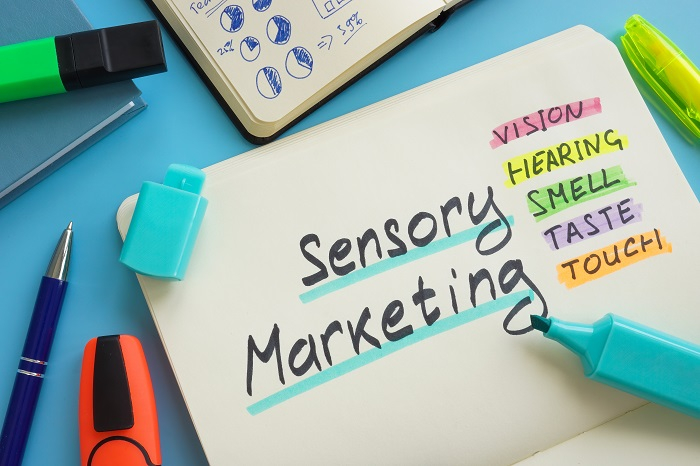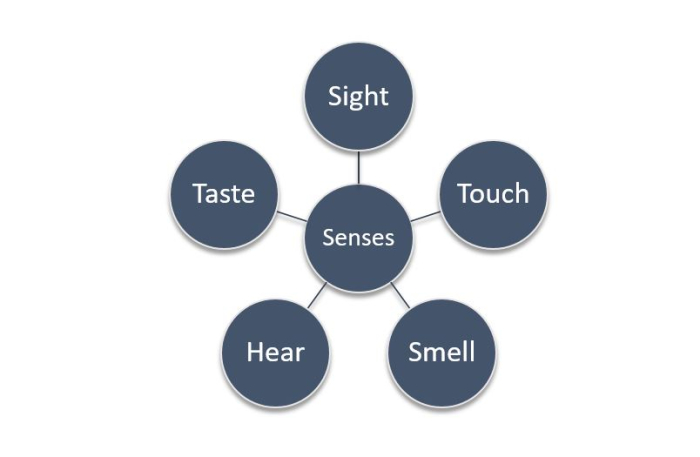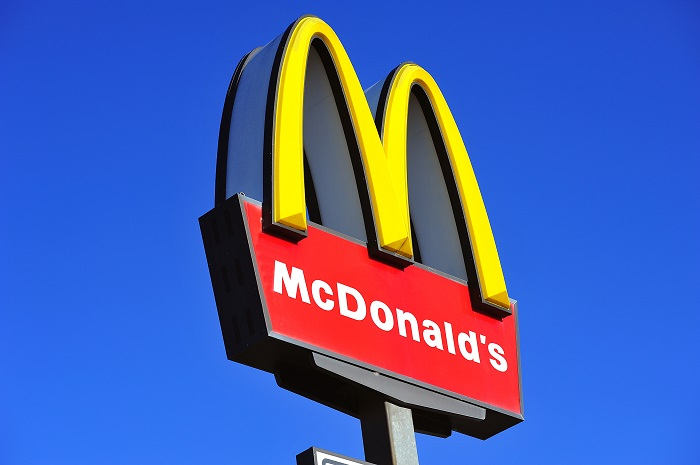
 Data Structure
Data Structure Networking
Networking RDBMS
RDBMS Operating System
Operating System Java
Java MS Excel
MS Excel iOS
iOS HTML
HTML CSS
CSS Android
Android Python
Python C Programming
C Programming C++
C++ C#
C# MongoDB
MongoDB MySQL
MySQL Javascript
Javascript PHP
PHP
- Selected Reading
- UPSC IAS Exams Notes
- Developer's Best Practices
- Questions and Answers
- Effective Resume Writing
- HR Interview Questions
- Computer Glossary
- Who is Who
What is Sensory Marketing?
Recently, marketers and businesspeople have been more interested in sensory marketing. Due to the challenges marketing encountered during the outbreak, it was critical to adjust to the situation and connect customers in fresh, original ways. What is sensory marketing exactly?

The goal of sensory marketing is to use at least one of the five senses to elicit a significant, favorable, and so fruitful response from a company's primary audience. provides a memorable experience. Additionally, it is well established that they work best when a single message or campaign appeals to several senses.
Humans consider many more indicators than mere sight when making judgments. How we perceive things with our senses?tastes, feels, scents, and sounds?has a big impact on how we feel about companies. In actuality, the sensory aspects of what you do, together with pricing, service, or other aspects, build your brand personality and identity.
The five senses are covered in this article along with how sensory marketing uses them and how they can be applied to marketing and advertising.
The 5 Senses Attached to the Sensory Marketing
Nowadays, sensory marketing is more common, but it's not an easy task. When focusing on sensations to elicit emotions and actions in your audience, there are several factors to take into account. It's crucial to select a sensibility that goes well with your brand.

Sight
One of the most significant is visual sensory marketing. People enjoy seeing things that are appealing and pleasant to the eye. Many months ago, the ancient Egyptians used papyrus to create posters in order to draw potential buyers to their markets. No, but this is a fantastic illustration of how archaic this kind of sales approach is.
Today, sensory marketing can be used in a variety of ways. You might produce graphics, infographics, pictures, works of art, posters, banner ads, movies, text, colors, and more. These promotional materials are also widely available, however, in the twenty-first century, the majority of these photographs can be found online on corporate pages and websites like Facebook, LinkedIn, and Instagram.
Hear
Utilizing sound as part of your sensory marketing strategy is a terrific approach to establishing a brand and increasing its memorability. For instance, in the 1920s, businesses routinely broadcast radio ads. For this, jingles, brand marketing, and music were utilized.
The most often used audiovisual marketing techniques nowadays include narration, sound effects, podcasts, audiobooks, and more.
At Paperturn, they are aware of the value of both sound and visual marketing for your company's success and brand identification. Therefore, a sound option that enables you to include both background music and sound effects on the pages of your digital newspaper was recently introduced.
Touch
Touch is another sensory marketing component. Although promoting your goods or services may seem weird, there are times when it makes perfect sense. For instance, you should test drive a new car before you buy it to check how it operates, how comfortable it is, and how it feels while you are driving. The same holds true for attire. Fabrics are frequently touched and tried on at clothing stores to assess their quality. Exposure to such products might boost brand sales and give clients more assurance when making a purchase.
Taste
Only actual producers of food and beverages are relevant in terms of taste. brands of cheese, restaurants, and cafes, among others. The impact of taste depends on the other senses that are present when it is experienced, and it is strongly tied to smell. We all understand that taste is highly subjective and that not everyone enjoys particular tastes or odors, just as not everyone enjoys certain noises or visuals.
So how does taste fit into the sensory marketing process? Use samples to terest your audience; it's that easy. Especially if they are used to purchasing their groceries from supermarkets, many consumers are hesitant to buy new products. No exists. Additionally, people are more likely to buy if they enjoy the flavor. This is a tried-and-true management technique for restaurants.
Smell
Some smell transport you back in time to your formative years or a specific moment in your life. The sense of smell should no longer be undervalued, especially for your sensory advertising plan.
Here are some inventive ways to use smell in your marketing plan
Unique scents that complement your brand and store - For instance, Hollister and Abercrombie & Fitch leverage their amazing experience to make their customers feel content and enjoy shopping within the store.
Aromas that are reminiscent of their surroundings, such as ocean fragrances, recently cut grass, and various herbal aromas. These kinds of scents can occasionally be effective in inspiring wonderful sentiments in customers when they shop in a business.
The smell of food, which is tough to ignore! - If someone is selling good food, a good idea should be to pay attention to the aroma and make sure it is alluring while a customer goes by using your restaurant/avenue food/food stall, etc. This is very similar to real estate agents who prepare pastries or cookies outside of the homes they are showing to make the neighborhood seem cozier.
Advantages of Sensory Marketing
Customers desire that.
Brand recognition is increased by color
Your customers will remember you more easily if you use music and sound effects.
Brand loyalty will increase as you get more invested in inbound and outbound marketing.
It creates a favorable impression, causing clients to feel good about your company. You can so choose to target a larger audience. Not every client can hear or see. As a result, having an approachable brand will help your marketing strategy make more sense.
Impressive.
Examples of Sensory Marketing
Here are some fascinating instances of well-known companies utilizing the five senses.
Apple
Customers adore the distinctive in-store experiences that Apple is renowned for offering. This enables clients to test out all of the store's technological equipment. Customers can thus touch and use the product before making a purchase. Customers now trust Apple because of their willingness to publicly display their goods even before a sale has been consummated.
McDonald's
This is a very well-known instance of sensory marketing. The catchphrase "Ba-da-ba-ba-ba - I'm lovin' it" is well known. One of the best jingles of all time is this one. McDonald's employs effective marketing in a style that is instantly identifiable and memorable.

Rolls Royce
The use of smell by Rolls Royce is yet another great illustration of sensory marketing. The company's distinctive "new car" aroma is well-known and draws in many auto aficionados, not only those who prefer high-end vehicles. New purchasers will be inspired by this aroma to crave that new car and buy a spotless, gleaming, brand-new vehicle. To say the least, it is an experience!

